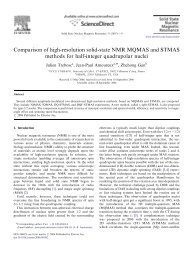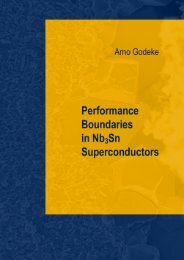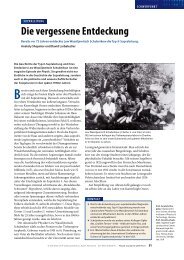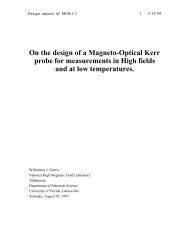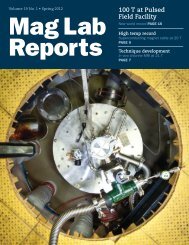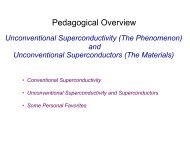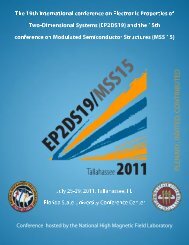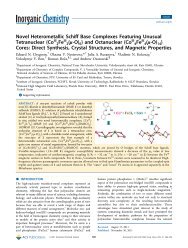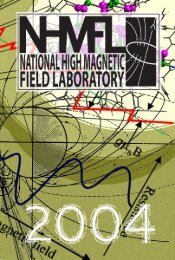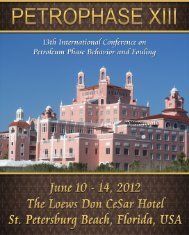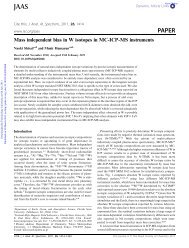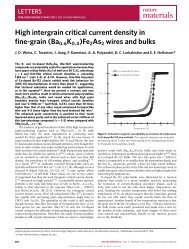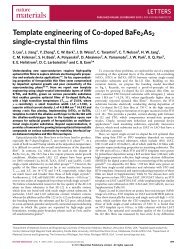Microscopes and Crystals - National High Magnetic Field Laboratory
Microscopes and Crystals - National High Magnetic Field Laboratory
Microscopes and Crystals - National High Magnetic Field Laboratory
Create successful ePaper yourself
Turn your PDF publications into a flip-book with our unique Google optimized e-Paper software.
ACTIVITY 14: MAKING CRYSTALS<br />
m6: <strong>Microscopes</strong> <strong>and</strong> <strong>Crystals</strong><br />
A CT<br />
CTIVITY<br />
Making <strong>Crystals</strong><br />
W<br />
hat is a crystal? <strong>Crystals</strong> are solids that form when there is a regular repeated pattern of<br />
molecules. In some solids, the arrangements of the atoms <strong>and</strong> molecules can be r<strong>and</strong>om<br />
throughout the material. In crystals, however, a collection of atoms is repeated in exactly the<br />
same arrangement over <strong>and</strong> over throughout the entire material.<br />
Because of their repetitive nature, crystals can take on strange <strong>and</strong><br />
interesting shapes naturally. When we grow crystals, in the laboratory<br />
or in the classroom, the atoms <strong>and</strong> molecules are separated into an<br />
individual collection of atoms, <strong>and</strong> as the water evaporates, they fall<br />
naturally into their appropriate place in the repetitive structure.<br />
When making crystals in the classroom, you first need to create a<br />
saturated solution. When you reach the point that no more solute (the<br />
substance that you are trying to dissolve) will dissolve (regardless of what<br />
you do to the solution), then you have made a saturated solution. For example,<br />
when adding sugar to water you can increase the amount of solute (sugar) the water (solvent)<br />
will hold by stirring <strong>and</strong> heating the solution.<br />
Below are some tips for making crystals <strong>and</strong> diagnosing some problems that students may<br />
experience when doing the activity for the first time.<br />
CRYSTAL MAKING TIPS<br />
1. Measure according to the directions. More of a chemical does not always<br />
make better crystals.<br />
2. When heating your saturated solution, use saucepans that are glass or enamel.<br />
Metal containers may react with your chemicals.<br />
3. It is preferable to use distilled or filtered water, but tap water works very well.<br />
To determine whether tap water will affect the crystals you are making, perform the “ice<br />
cube test.” (If ice cubes appear cloudy, tap water will probably produce cloudy crystals so<br />
use distilled or filtered water. If ice cubes are clear, use tap water.)<br />
SCIENCE, OPTICS & YOU GUIDEBOOK<br />
- 127 -



